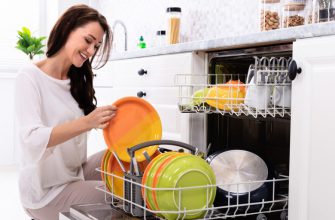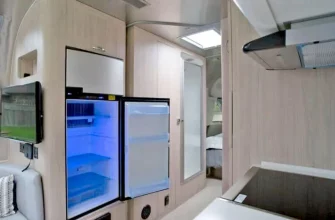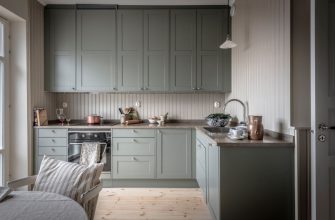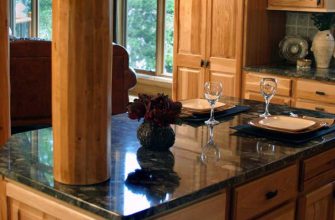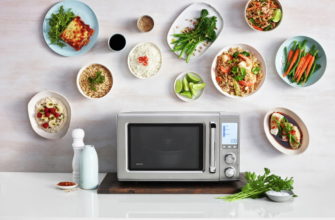Selecting the right kitchen range hood is an important decision when designing or renovating your kitchen. The range hood serves the critical functions of removing smoke, grease, odors, and moisture from the air while you cook. With options ranging from under-cabinet models to powerful wall-mounted range hoods and sleek island range hoods, there is a style to match every kitchen aesthetic and cooking need.
In this comprehensive guide, we’ll explore the different types of kitchen range hoods available and the key factors to consider when deciding which model is best suited for your cooking requirements and kitchen layout. We’ll provide tips on installation and maintenance to keep your range hood operating efficiently. Finally, we’ll offer recommendations on how to select the perfect range hood to complement your cooking appliances, kitchen size, and personal style.
- Types of Kitchen Range Hoods
- Under-Cabinet Range Hoods
- Wall-Mounted Range Hoods
- Island Range Hoods
- Downdraft Range Hoods
- Custom Built-In Range Hoods
- Factors to Consider When Choosing a Kitchen Range Hood
- Sizing and Ventilation Requirements
- Noise Level
- Design and Aesthetics
- Energy Efficiency
- Additional Features and Functions
- Installation and Maintenance
- Installation Process for Different Types of Range Hoods
- Maintenance Tips for Longevity and Efficiency
- Enhancing Performance and Functionality
- Understanding Airflow and CFM Ratings
- Adding Charcoal Filters for Odor Control
- Exploring Venting Options: Ducted vs. Ductless
- Selecting the Right Kitchen Range Hood for Your Cooking Style
- Matching the Range Hood to Your Cooking Habits and Appliances
- Considering the Layout and Size of Your Kitchen
- Conclusion
Types of Kitchen Range Hoods
Under-Cabinet Range Hoods
Under-cabinet range hoods are installed beneath wall-mounted kitchen cabinets, positioned directly over the cooktop or range. Typically the most affordable and compact option, under-cabinet range hoods effectively remove contaminants from the air while conserving space.
These models come in various widths sized to match standard cabinet increments. The fan and filters are housed in a sleek hood which mounts underneath the cabinet. Ducted under-cabinet range hoods vent outside, while ductless models recirculate the air through filters back into the kitchen.
Wall-Mounted Range Hoods
Wall-mounted range hoods are powerful range hoods mounted directly to the wall behind the cooktop or range. Typically more powerful than under-cabinet models, wall-mounted range hoods feature prominent, decorative hoods that make a design statement in the kitchen.
Available in various widths, wall-mounted range hoods require adequate wall space behind the cooking surface. However, their strong ventilation capacities and angular designs make them ideal for professional-grade ranges and cooktops.
Island Range Hoods
Island range hoods provide focused ventilation over a freestanding cooktop or range island. Island range hoods feature eye-catching, sculptural silhouettes suspended above the island by a chimney-like hood and canopy.
Since they don’t mount to the wall or under cabinets, island range hoods require special installation considerations. Their ductwork runs concealed through the ceiling and roof. Island range hoods make a striking visual statement and deliver targeted ventilation performance.
Downdraft Range Hoods
Downdraft range hoods are specialty range hoods that pull cooking contaminants downwards and vent them out through ductwork installed below the floor. Integrated directly into the cooktop surface or installed in the kitchen island behind the range, these models lie flush and retract when not in use.
Featuring a sleek, minimalist and modern style, downdraft range hoods conserve space and keep sightlines open. They require technical installation and work best with simple, clean cooking that doesn’t produce heavy smoke or grease.
Custom Built-In Range Hoods
Custom built-in range hoods are integrated into custom cabinetry designs, tailored specifically for your kitchen layout. Ranging from contemporary to classic styles, these customizable range hoods mount directly into the cabinetry over the range or cooktop.
Built-in range hoods require careful coordination between cabinet design, ductwork, and ventilation needs. However, their seamless installation creates a unified aesthetic perfect for upscale and luxury kitchen designs.
Factors to Consider When Choosing a Kitchen Range Hood
Sizing and Ventilation Requirements
When selecting a range hood, one of the most important factors is ensuring adequate ventilation power and capacity. Hoods that are too small for your cooking equipment will fail to efficiently capture and redirect cooking byproducts.
Range hoods are rated by CFM (cubic feet per minute) which indicates the volume of air exchanged. Standard sizing recommendations are 100 CFM for compact 30” cooktops, up to 1,200+ CFM for professional-style 48”+ ranges. Consider your cooking style and equipment size to choose adequate CFM airflow.
Noise Level
The fan and motor which generate ventilation in a range hood also produce noise which can make conversations difficult in an open kitchen. Compare noise ratings measured in sones from different models and brands when making your selection.
Quieter range hoods typically use multiple fan speeds and sound-dampening features. However, note that higher CFM settings generally increase noise levels as well.
Design and Aesthetics
Today’s range hoods are available in a wide array of materials (stainless steel, wood, colored metal) and styles. Consider your kitchen’s finishes and architecture to select a range hood that complements the overall aesthetic.
Range hood style varies from sleek and modern to traditional. Determine visual impact based on hood style, mounting type, ventilation style and size. An attractive, well-proportioned range hood can provide a focal point in your kitchen design.
Energy Efficiency
Compare range hood ratings such as Energy Star certification or Annual Energy Consumption (AEC) measured in kWh when available. More energy efficient range hoods typically use less energy while still meeting ventilation and noise requirements.
Features like LED cooktop lighting, efficient fan motors, and heat sensors also improve energy efficiency. Consider installing a variable speed or demand-control range hood to further conserve energy.
Additional Features and Functions
Many contemporary range hoods integrate extra functions for convenience and usability. These include dimmable or sliding controls, filter cleaning reminders, perimeter aspiration for increased reach, wireless connectivity and voice controls.
Specialty range hood features may include warming lamps, cooktop lighting, built-in microwaves or cooking sensors. Determine if any integrated extras might enhance your cooking experience or kitchen functionality.
Installation and Maintenance
Installation Process for Different Types of Range Hoods
Proper installation is critical to maximize range hood efficiency and performance. Under-cabinet range hoods typically involve simpler installation attaching directly to existing cabinets over the range.
Larger wall-mount, island, and downdraft range hoods usually require professional installation. This involves ductwork running through cabinets, ceilings, and walls paired with electrical connections. Proper placement, mounting, and duct sealing all impact air flow.
Maintenance Tips for Longevity and Efficiency
Regular cleaning and replacing filters is essential for proper range hood operation. Stainless steel surfaces should be cleaned using non-abrasive products to avoid scratches. Fans, vents and grease reservoirs also need periodic cleaning.
Inspect ductwork to ensure adequate airflow and check for leaks around joints. Confirm dampers are adjusted properly to minimize backdrafts. Follow all manufacturer guidelines for maintenance tasks and intervals to keep your range hood running efficiently.
Enhancing Performance and Functionality
Understanding Airflow and CFM Ratings
CFM (cubic feet per minute) measures the airflow efficiency of a range hood. Standard hoods offer 150-300 CFM, but high performance models reach 1,200 CFM or more. Match CFM ratings to the size of your cooktop or range.
Higher CFM ratings result in increased ventilation power. This helps combat heat, condensation, and cooking byproducts. Look for range hoods with CFM ratings suitable for your cooking equipment.
Adding Charcoal Filters for Odor Control
For ductless range hoods that recirculate air, adding charcoal filters helps remove cooking odors. Charcoal filters use activated carbon to trap gases and fumes which would otherwise get released back into the kitchen.
Replace charcoal filters every few months as needed to prevent odor buildup over time. This provides cleaner indoor air quality and keeps kitchen smells from spreading throughout your home.
Exploring Venting Options: Ducted vs. Ductless
Ducted range hoods route contaminated air outside through vents and ductwork. This requires drilling through walls and ceilings but thoroughly removes grease, fumes, and odors. Ductless models have internal filtration systems to trap contaminants before recirculating purified air.
Ductless range hoods avoid complex installation but can allow lingering smells or moisture back into your kitchen over time. Compare options to balance ventilation requirements with available ducting routes.
Selecting the Right Kitchen Range Hood for Your Cooking Style
Matching the Range Hood to Your Cooking Habits and Appliances
Consider your cooking style and range usage to select adequate ventilation power. Frequent use of high heat, grilling, frying, or wok cooking requires more powerful range hoods than occasional light simmering. Professional-grade ranges also necessitate greater ventilation capacity.
A range hood sized too small for your cooking equipment will struggle to properly remove heat, grease and smoke. Always match CFM ratings and feature sets to your specific cooking habits and range type.
Considering the Layout and Size of Your Kitchen
The size and floorplan of your kitchen impacts range hood selection as well. Compact kitchens may require space-saving under-cabinet range hoods, while large open layouts can accommodate powerful wall-chimney or island range hoods.
Measure ceiling height, cabinet configurations, potential ductwork routes and available electrical connections to find hood dimensions and styles suited to your space. This ensures proper fit and ventilation coverage to match your kitchen’s floorplan.
Conclusion
Identifying the right kitchen range hood for your home involves important considerations regarding capability, installation, and design aesthetics. Carefully evaluate the CFM ventilation requirements matching your cooking equipment size and usage patterns.
Compare noise ratings, energy efficiency features, and any convenient bonus capabilities before selecting the ideal model. Finally, choose from the many available styles and mounting configurations to find the perfect fit for both form and function in your kitchen.
By properly installing and maintaining your new kitchen range hood, it will provide many years of clean air and comfortable cooking enjoyment in your home.


